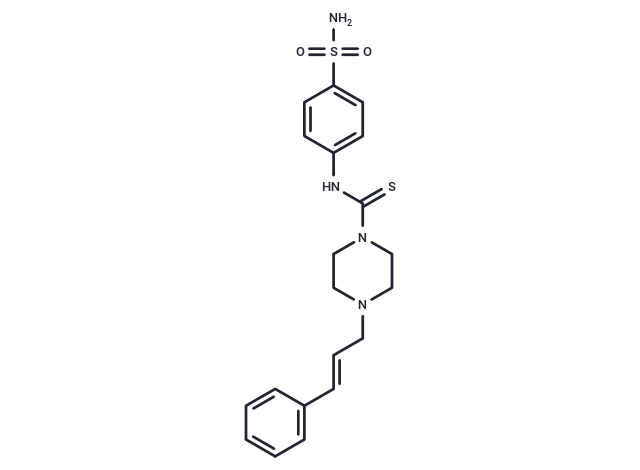Shopping Cart
- Remove All
 Your shopping cart is currently empty
Your shopping cart is currently empty

LF3 is a specific inhibitor of canonical Wnt signaling by disrupting the interaction between β-catenin and TCF4 (IC50 < 2 μM)

| Pack Size | Price | Availability | Quantity |
|---|---|---|---|
| 2 mg | $30 | In Stock | |
| 5 mg | $48 | In Stock | |
| 10 mg | $74 | In Stock | |
| 25 mg | $150 | In Stock | |
| 50 mg | $263 | In Stock | |
| 100 mg | $397 | In Stock | |
| 1 mL x 10 mM (in DMSO) | $54 | In Stock |
| Description | LF3 is a specific inhibitor of canonical Wnt signaling by disrupting the interaction between β-catenin and TCF4 (IC50 < 2 μM) |
| Targets&IC50 | β-catenin/TCF4 (Alpha Screen):1.65 μM , β-catenin/TCF4 (ELISA):1.82 μM |
| In vitro | LF3 inhibited Wnt/β-catenin signals in cells with exogenous reporters and in colon cancer cells with endogenously high Wnt activity. LF3 also suppressed features of cancer cells related to Wnt signaling, including high cell motility, cell-cycle progression, and the overexpression of Wnt target genes[1]. |
| In vivo | LF3 reduced tumor growth and induced differentiation in a mouse xenograft model of colon cancer.LF3 is a specific inhibitor of canonical Wnt signaling with anticancer activity[1]. |
| Animal Research | Unsorted GFPlow and GFPhigh SW480 cells (1 × 10^4) were subcutaneously injected into the back skin of NOD/SCID mice. Tumor growth was monitored over a period of 45 days. For therapy, LF3 was administered i.v. at 50 mg/kg body weight for three rounds over 5 consecutive days, with 2-day breaks[1]. |
| Molecular Weight | 416.56 |
| Formula | C20H24N4O2S2 |
| Cas No. | 664969-54-4 |
| Smiles | NS(=O)(=O)c1ccc(NC(=S)N2CCN(C\C=C\c3ccccc3)CC2)cc1 |
| Relative Density. | 1.341 g/cm3 (Predicted) |
| Storage | Powder: -20°C for 3 years | In solvent: -80°C for 1 year | Shipping with blue ice. | ||||||||||||||||||||||||||||||
| Solubility Information | DMSO: 32 mg/mL (76.82 mM), Sonication is recommended. | ||||||||||||||||||||||||||||||
Solution Preparation Table | |||||||||||||||||||||||||||||||
DMSO
| |||||||||||||||||||||||||||||||

Copyright © 2015-2025 TargetMol Chemicals Inc. All Rights Reserved.